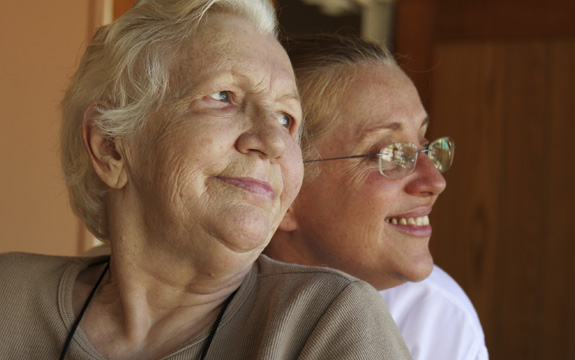Polymyalgia Rheumatica (PMR)
What is polymyalgia rheumatica?
Polymyalgia rheumatica (PMR) is a relatively common cause of widespread aching and stiffness in older adults. It can be difficult to diagnose because it rarely causes swollen joints or other abnormalities on physical exam. It may occur with another condition, giant cell arteritis.
The typical symptoms of polymyalgia rheumatica (PMR) are aching and stiffness around the upper arms, neck, lower back and thighs. Symptoms tend to develop quickly, over a period of several days or weeks, and occasionally even overnight. Both sides of the body are affected. Involvement of the upper arms, with difficulty raising them above the shoulders, is especially common.

Aching and stiffness are much worse in the morning, and tend to improve gradually as the day goes by, but periods of inactivity, such as a long car ride or sitting too long in one position, will cause stiffness to return. Stiffness may be so severe that there is pain at night, problems getting dressed in the morning (for example, putting on a jacket or bending over to pull on socks and shoes), or difficulty getting up from a low chair. Occasionally, aching occurs in distal joints such as those of the hands and wrists.
What causes polymyalgia rheumatica?
The cause of PMR is unknown. PMR does not arise from side effects of medications. The tendency for symptoms to begin abruptly suggests the possibility of an infection but, so far, no specific infection has been found. “Myalgia” comes from the Greek word for “muscle pain,” but specific tests of the muscles, such as an enzyme test (a type of blood test) or actual biopsy, are all normal. PMR has a particular tendency to involve the shoulder and hip joints, and the bursae (or sacs) around these joints. Pains at the upper arms and thighs thus come from the nearby shoulder and hip joints, and represent what rheumatologists call “referred pain.” PMR should not be confused with fibromyalgia, a poorly understood condition that affects mainly younger adults and is not a form of arthritis.
Who gets polymyalgia rheumatica?
PMR occurs only in older adults and very rarely in people younger than 50. The average age of onset of symptoms is 70, so people who have PMR may be in their 80s or even older. Women are affected somewhat more often than men, and the disease is more frequent in whites than nonwhites, but all races are susceptible. PMR is not unusual; in fact, as a new diagnosis it is more common in older adults than rheumatoid arthritis.

 Riverside6180 Brockton Avenue, Riverside, CA 92506
Riverside6180 Brockton Avenue, Riverside, CA 92506 La Sierra4244 Riverwalk Parkway, Riverside, CA 92505
La Sierra4244 Riverwalk Parkway, Riverside, CA 92505

